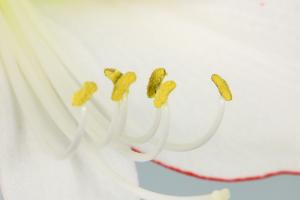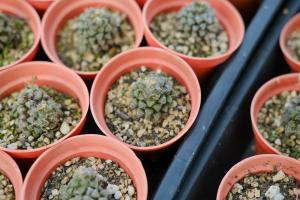What Part of a Plant Cell Stores Water?
Plants are complex organisms that have various parts with different functions. One of these parts is the plant cell, which is responsible for many processes within the plant's body. The plant cell has a unique structure, and different parts of the cell perform different functions. One of the critical functions of a plant cell is to store water. But what part of a plant cell stores water?
The Vacuole Stores Water
The answer is the vacuole. The vacuole is an organelle present in most plant cells, and it is responsible for storing various substances, including water. The primary function of the vacuole is to maintain the turgor pressure of the cell. Turgor pressure is the pressure exerted by the cell on its cell wall, and it is essential for maintaining the shape and rigidity of the cell. The vacuole achieves this by storing water and other substances, which helps it maintain its size and shape.
The vacuole is a fluid-filled organelle that is usually the largest structure in the plant cell. It is surrounded by a single membrane called the tonoplast, which separates the contents of the vacuole from the rest of the cell. The tonoplast is selectively permeable, which means it only allows certain substances to pass through. This property helps the vacuole to maintain the ionic and osmotic balance of the plant cell by regulating the movement of ions and solutes in and out of the vacuole.
The Importance of Water Storage in the Vacuole
The ability of the vacuole to store water is essential for the survival of the plant. Plants need water for many processes, including photosynthesis, transpiration, and the absorption of nutrients from the soil. However, water is not always readily available in the environment, and plants need to store water to survive during periods of drought or water scarcity.
The vacuole also plays a vital role in maintaining the plant's homeostasis. Homeostasis is the ability of an organism to maintain a stable internal environment, regardless of changes in the external environment. The vacuole helps the plant maintain homeostasis by storing excess water and ions, which helps regulate the plant's internal environment.
The Relationship between Water Storage and Plant Growth
The amount of water stored in the vacuole has a direct impact on plant growth. When a plant has sufficient water, the vacuoles are full, and the plant cells are turgid. Turgidity is essential for cell expansion and growth. Cells that lack turgor pressure become flaccid and cannot grow properly, which can affect the overall growth of the plant.
However, when there is a water shortage, the cells lose turgor pressure, and the plant becomes wilted. Wilting affects the plant's ability to photosynthesize, absorb nutrients, and grow. Therefore, water storage in the vacuole plays a crucial role in maintaining the growth and survival of the plant.
In Conclusion
In summary, the vacuole is the part of the plant cell that stores water. The ability of the vacuole to store water is essential for plant growth and survival. Water storage in the vacuole also helps maintain the plant's turgor pressure, homeostasis, and ionic and osmotic balance. Therefore, understanding how the vacuole works and its functions is critical for understanding plant cell biology.

 how many times do yo...
how many times do yo... how many planted tre...
how many planted tre... how many pine trees ...
how many pine trees ... how many pecan trees...
how many pecan trees... how many plants comp...
how many plants comp... how many plants can ...
how many plants can ... how many plants and ...
how many plants and ... how many pepper plan...
how many pepper plan...































